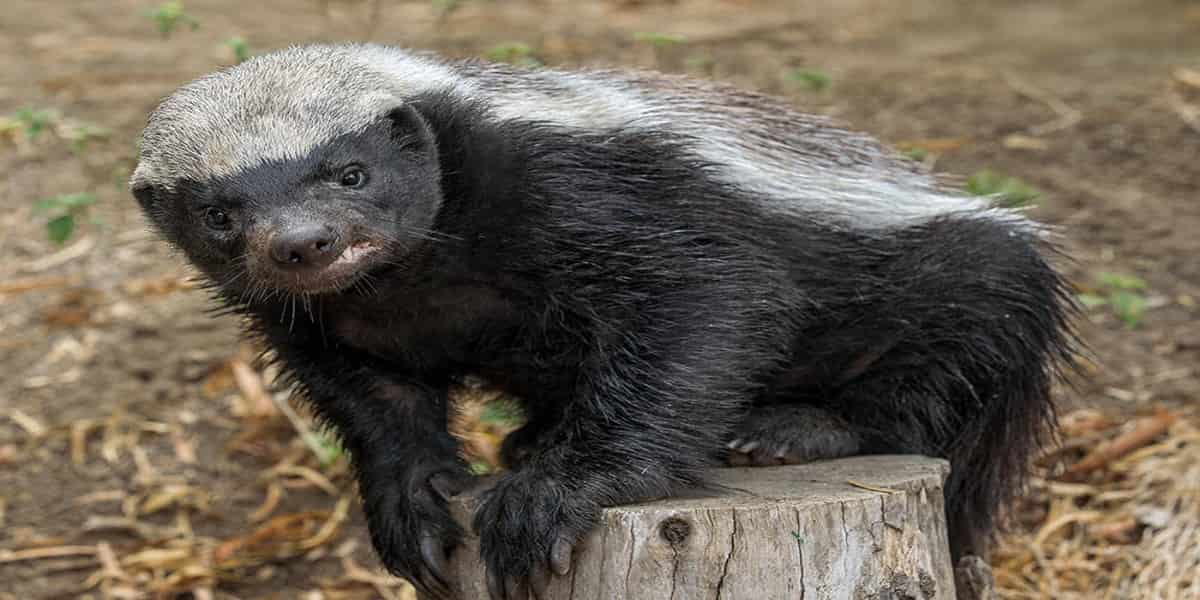Honey Badger
Doodlebrary
- The honey badger (Mellivora capensis) is a small but ferocious mammal that has earned a reputation for its toughness, tenacity, and intelligence.
- The honey badger is a fascinating example of a small animal with big abilities.
- Its resilience, intelligence, and unmatched fearlessness make it one of the most formidable creatures in the animal kingdom.
- Whether it’s raiding a beehive or standing its ground against a lion, the honey badger truly embodies the spirit of survival.
- Here is a pointwise overview of the honey badger’s characteristics, behavior, and notable traits:
1. Classification and Habitat
- Scientific Name: Mellivora capensis
- Family: Mustelidae (same family as weasels, otters, and ferrets)
- Native Range: Found across Africa, Southwest Asia, and the Indian subcontinent.
- Habitat: Prefers dry areas like deserts, savannas, and scrublands, but can adapt to various environments.
2. Physical Characteristics
- Size: Medium-sized, around 60-100 cm in length, with males typically larger than females.
- Weight: Weighs between 7 to 16 kg (15 to 35 pounds).
- Appearance:
- Stout body with thick skin, making it difficult for predators to bite.
- Distinctive color: a black body with a broad white stripe running from the top of the head to the base of the tail.
- Claws: Equipped with sharp claws on their front paws, used for digging and defense.
3. Diet and Hunting Skills
- Omnivorous Diet: Eats a wide variety of foods, including small mammals, birds, insects, fruits, and honey.
- Skilled Hunters: Honey badgers are known to hunt venomous snakes, scorpions, and other dangerous prey.
- Immunity to Venom: They have remarkable resistance to snake venom, allowing them to survive bites from deadly species like cobras.
- Honey-Lover: True to its name, honey badgers are fond of honey and often raid beehives. Their thick skin helps protect them from bee stings.
4. Fearlessness and Defense Mechanisms
- Aggressiveness: Known for their fearless nature, they can take on animals much larger than themselves, such as lions, hyenas, and leopards.
- Thick Skin: Their loose, tough skin makes it hard for predators to gain a grip or cause serious harm.
- Sharp Teeth and Claws: They use their powerful jaws and sharp teeth to defend themselves.
- Intelligence: Honey badgers have been observed using tools, such as sticks or rocks, to extract food or escape from enclosures.
5. Notable Behavior and Adaptability
- Solitary Creatures: Honey badgers are generally solitary, only coming together during mating season.
- Nocturnal and Diurnal: Depending on the region and environmental conditions, they can be active both day and night.
- Burrowing Abilities: Expert diggers, they create extensive burrows and use them for shelter and resting.
- Adaptable Survivors: They can live in extreme environments, from dry deserts to lush forests, demonstrating their remarkable adaptability.
6. Cultural Significance
- Symbol of Courage: Honey badgers are often revered for their fearlessness and determination, making them symbols of bravery in some cultures.
- Internet Fame: In modern times, the honey badger became an internet sensation due to videos showcasing its fearless behavior, with the phrase “Honey badger don’t care” becoming a viral meme.
7. Conservation Status
- Least Concern: According to the IUCN Red List, honey badgers are listed as “Least Concern” due to their wide range and adaptability.
- Threats: Despite their tough nature, honey badgers face threats from habitat loss, hunting, and conflicts with humans, particularly in areas where they raid beehives or livestock.
